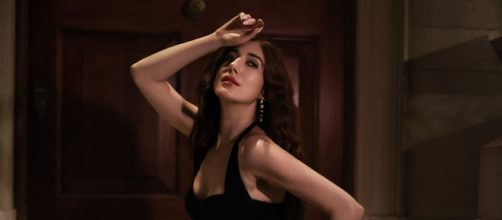For Anna Silverman, the clothes a character wears are a portal into their personality, emotional state and deepest desires. The Russian-born, London-based theatre and film actress is currently working on a production that embraces 1920s glamour, as well as on a project about loneliness in the modern city. Here she talks about her love of Hollywood glitz, the vital role of costume designers, and how she channels her favourite actress.
Acting career
Kate: How do you connect your style with your acting career?
Anna Silverman: For me, fashion is not just a way of dressing; it's a means of self-expression, a canvas on which I paint the essence of the characters I portray.
Every character I take on is a unique individual with their own story, personality and quirks. And fashion is a powerful tool in helping me bring these characters to life. When I prepare for a role, one of my favourite parts of the process is delving into the character's wardrobe. I ask myself: "What does this character wear, and why? How do their clothing choices reflect their background, their aspirations, or their emotional state?"
Which era of fashion appeals to you most?
I draw a lot of inspiration from the iconic fashion of the 1920s, as it’s all about freedom, expression and embracing a more relaxed and modern look. The flapper style, with its dropped waistlines, shorter hemlines, and loose, flowing silhouettes, is incredibly inspiring to me.
The boldness and sense of rebellion that defined the fashion of that time resonate with my own desire for self-expression and creativity.
Fashion inspiration
Who’s your biggest fashion inspiration?
The legendary Greta Garbo. Her fashion sense was a blend of classic elegance and a touch of androgyny, which I find utterly captivating. She had a way of making even the simplest outfits look effortlessly chic. Her ability to combine sophistication with a hint of mystery is something I greatly admire.
How does fashion come into your more contemporary roles?
It’s still vital – the character's wardrobe can be a treasure trove of insights. A character who wears tailored suits might exude confidence and authority, while someone in more casual attire could convey a laid-back, approachable demeanour.
These details help me embody the character more authentically. Fashion is a bridge that connects me to my characters on a personal level. It's a way of getting under their skin, understanding their choices, and conveying their essence to the audience.
Style
What kind of projects have you worked on that have reflected your style?
I've had the privilege of being part of various projects that allowed me to explore and adapt my style to different characters and settings. In particular, when I played Anna Karenina on stage. Anna is a complex character and the role demanded a nuanced approach to style to capture Anna's evolution throughout the story – from her initial appearance as a high-society woman to her gradual transformation.
I worked closely with costume designers and stylists to create a wardrobe that not only reflected the period, but also mirrored Anna's emotional state. The process involved selecting garments that allowed me to express Anna's elegance, inner turmoil, and ultimately her tragic fate.
What’s your next project?
I'm deeply involved in a project about the challenges of relationships and loneliness in bustling cities. While I can't disclose all the details just yet, I'm excited to be a part of this project. It's an opportunity to shed light on issues that many people grapple with in big cities, where the fast pace of life can sometimes leave individuals feeling isolated and disconnected. I hope to explore these themes in a meaningful and thought-provoking way, addressing the intricacies of human connections and the impact of modern urban living on our emotional wellbeing.


